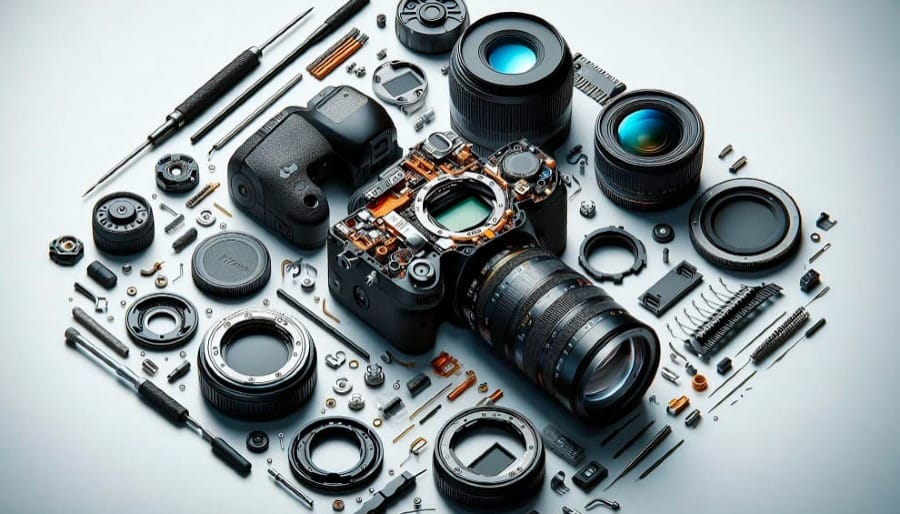Introduction
Mirrorless camera systems have become a game-changer in the world of photography, offering advanced technology in a compact form. Unlike traditional DSLRs, mirrorless cameras eliminate the bulky internal mirror mechanism, making them lighter, quieter, and often faster. This innovation has led to increased popularity among both hobbyists and professionals, who are drawn to their portability without sacrificing performance.
Understanding the different camera parts in a mirrorless system is essential for any photographer looking to maximize their gear’s potential. Whether you're transitioning from a DSLR or exploring photography for the first time, getting to know how each component works will help you make informed decisions when choosing or upgrading your equipment.
From the sensor and electronic viewfinder to the autofocus system and image stabilization, each part plays a critical role in the camera’s overall performance. These advancements in camera parts, particularly in mirrorless models, allow photographers to capture images with greater precision and speed, pushing creative boundaries. In this post, we’ll dive into the key camera parts of modern mirrorless systems, exploring how they work together to deliver cutting-edge results and why they are redefining photography today.
Section 1: What Makes Mirrorless Cameras Different?
The Definition of a Mirrorless Camera
A mirrorless camera, as the name suggests, is defined by the absence of the mirror mechanism that is central to DSLR (Digital Single-Lens Reflex) cameras. In DSLRs, a mirror inside the camera body reflects light coming through the lens into an optical viewfinder. When the shutter is pressed, the mirror flips up, allowing the light to reach the image sensor and capture the photo. Mirrorless cameras, on the other hand, skip this mechanical mirror setup entirely. Instead, light passes directly through the lens to the image sensor, which continuously displays the scene on an electronic viewfinder (EVF) or LCD screen.
The absence of this mirror is one of the most defining differences between mirrorless cameras and DSLRs. By eliminating this moving part, manufacturers have been able to produce camera bodies that are more compact and lighter, making them more portable without compromising on performance. While both types of cameras share many common camera parts, the mirrorless design brings unique advantages that cater to modern photographic needs.
Compact Size and Weight
One of the most noticeable differences between mirrorless cameras and DSLRs is the significant reduction in size and weight. Since mirrorless cameras do not need to house the mirror mechanism or the optical viewfinder, they can be designed with a smaller and slimmer profile. For many photographers, this reduction in weight and bulk is a major advantage, particularly for travel, street, and landscape photography, where carrying lighter gear is important.
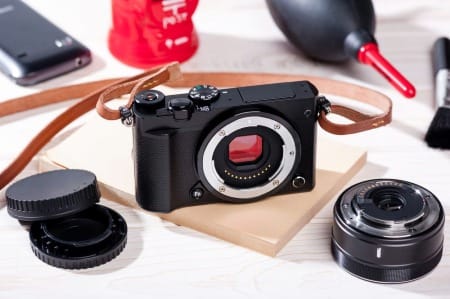
Despite the smaller size, mirrorless cameras still retain all the essential camera parts necessary for high-quality photography. The image sensor, lens mount, battery, and other vital components are engineered to fit into a smaller body without sacrificing performance. This compact design appeals to both amateur photographers who want a less intimidating system and professionals who need a lightweight secondary camera for certain shoots.
Electronic Viewfinder (EVF) vs. Optical Viewfinder
Another critical distinction between mirrorless cameras and DSLRs lies in the viewfinder system. Traditional DSLRs use an optical viewfinder, which provides a direct optical path to the scene via the mirror and prism assembly. In contrast, mirrorless cameras employ an electronic viewfinder (EVF), which uses the image sensor to display a real-time digital image of the scene on a small screen inside the viewfinder.
The EVF offers several advantages over optical viewfinders. For one, it provides real-time exposure previews, allowing photographers to see how the final image will look before pressing the shutter. Features like focus peaking and zebras (which show areas of overexposure) are also possible with an EVF, giving photographers more control over their shots. Furthermore, with the EVF, information overlays can be customized, and settings changes are immediately visible without taking your eye away from the viewfinder. While early iterations of EVFs were criticized for lag or lower resolution, modern mirrorless systems have significantly improved these issues, offering high-resolution and responsive viewfinders.
Fewer Mechanical Components
By removing the mirror and other associated mechanical camera parts, mirrorless systems also tend to have fewer moving components, which can result in fewer potential points of failure over time. This reduced reliance on mechanical parts not only makes mirrorless cameras quieter during operation but also contributes to faster shooting speeds and improved durability. The simplified internal design means less vibration from moving parts, which can help improve image sharpness, particularly at slower shutter speeds.
In conclusion, mirrorless cameras offer several distinct advantages over traditional DSLRs, including a more compact design, an advanced electronic viewfinder, and fewer moving camera parts, all contributing to a more modern and versatile photography experience.
Section 2: Key Camera Parts in Modern Mirrorless Systems
Modern mirrorless cameras are a blend of cutting-edge technology and design, relying on a variety of camera parts that work together to deliver exceptional image quality and functionality. Each of these components plays a vital role in how photographers experience and utilize their gear. In this section, we’ll explore the key camera parts in mirrorless systems, emphasizing their individual contributions to the overall performance.
Camera Body
The camera body is the heart of any mirrorless system, serving as the structural foundation that houses all essential camera parts. With the elimination of the mirror mechanism found in DSLRs, mirrorless camera bodies are generally more compact and lightweight, making them highly portable. Despite the smaller size, modern camera bodies are often made from durable materials like magnesium alloy to ensure longevity and resilience, particularly in professional-grade models.
Many mirrorless camera bodies are also weather-sealed, which is critical for photographers working in harsh environments. This added protection helps safeguard sensitive camera parts like the sensor, viewfinder, and electronic connections from dust, moisture, and extreme temperatures. Additionally, camera bodies today are designed with ergonomics in mind, offering comfortable grips and customizable button layouts to enhance user experience.
Sensor
The sensor is arguably the most crucial part of any digital camera. In mirrorless systems, sensors come in various sizes, including full-frame, APS-C, and Micro Four Thirds. The size of the sensor directly influences image quality, depth of field, low-light performance, and dynamic range. Full-frame sensors, for example, offer superior image quality and better performance in low-light conditions, while smaller sensors like APS-C are valued for their compactness and versatility.
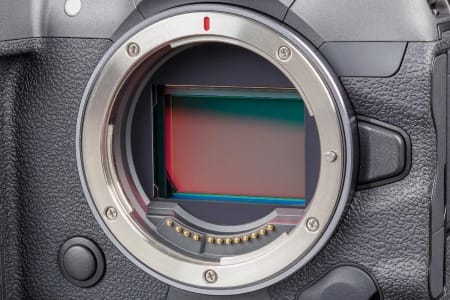
With the elimination of the mirror, the sensor in a mirrorless camera is constantly exposed to incoming light, which enables real-time image previewing through the electronic viewfinder or LCD screen. This direct link between the lens and the sensor is a defining feature of mirrorless technology, making the sensor one of the most important camera parts in these systems.
Lens Mount
The lens mount is the physical connection point between the camera body and the lens. In modern mirrorless systems, manufacturers have introduced new lens mounts specifically designed for mirrorless cameras, such as Sony’s E-mount, Canon’s RF mount, and Nikon’s Z mount. These mounts are generally larger than those found in DSLRs, allowing more light to reach the sensor, which can result in sharper images and better low-light performance.
Lens mounts are a crucial element because they determine lens compatibility and future expandability. Many mirrorless cameras offer the option to use adapters, allowing photographers to use older DSLR lenses with their mirrorless systems. However, native mirrorless lenses often provide better performance due to their optimized design for shorter flange distances (the distance between the sensor and the lens). The lens mount, therefore, is a key camera part that influences both flexibility and optical quality.
Electronic Viewfinder (EVF)
The electronic viewfinder (EVF) is a fundamental feature in mirrorless cameras, replacing the traditional optical viewfinder found in DSLRs. The EVF is a small digital screen that displays a real-time image captured by the sensor, giving photographers an exact preview of their shot, including exposure, white balance, and focus. This makes it easier to compose images with greater accuracy, especially in challenging lighting conditions.
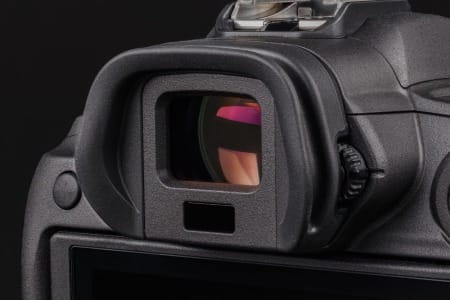
One of the advantages of the EVF is its ability to display additional information overlays, such as histograms, zebras (for overexposure warnings), and focus peaking (for manual focus accuracy). These features empower photographers to make real-time adjustments to their settings without taking their eye off the scene. As one of the most advanced camera parts, the EVF contributes significantly to the modern mirrorless experience, offering both convenience and precision.
LCD Touchscreen
The LCD touchscreen is another essential component in mirrorless cameras, providing a versatile interface for photographers to navigate settings, compose shots, and review images. In most modern mirrorless cameras, the LCD screen can tilt or fully articulate, allowing for greater flexibility when shooting from difficult angles, such as low to the ground or above eye level.
Touchscreen functionality enhances the user experience by enabling quick access to menus and settings, as well as features like touch-to-focus and touch-shutter, where a simple tap on the screen selects the focus point or takes the shot. For vloggers and content creators, the ability to flip the screen around for self-recording is especially useful, making the LCD touchscreen one of the most practical camera parts for modern workflows.
Image Stabilization (IBIS)
In-body image stabilization (IBIS) is a feature found in many high-end mirrorless cameras. This technology stabilizes the camera sensor to compensate for any movements or shakes during shooting, resulting in sharper images, particularly when using slow shutter speeds or shooting handheld in low light. IBIS is especially useful for photographers who prefer to shoot without a tripod or for those using lenses that lack optical stabilization.

IBIS works by adjusting the sensor in real time to counteract movements along five axes (pitch, yaw, roll, and horizontal/vertical shift). This advanced feature has become one of the most sought-after camera parts in modern mirrorless systems, providing photographers with more flexibility and greater success in capturing sharp images, regardless of the conditions.
Autofocus System
The autofocus system in modern mirrorless cameras is another area where significant advancements have been made. Mirrorless cameras typically use a combination of phase-detection and contrast-detection autofocus, with many systems now employing hundreds, if not thousands, of focus points across the sensor. This results in faster and more accurate focusing, especially when tracking moving subjects.
Many modern mirrorless systems include advanced autofocus features like Eye AF, which locks focus on a subject's eye, making it ideal for portrait photography. Continuous tracking capabilities also allow for precise focus on subjects in motion, which is especially useful for sports and wildlife photographers. The autofocus system is one of the most critical camera parts, dramatically improving the photographer’s ability to capture sharp, well-focused images in a variety of situations.
Battery and Power Management
Finally, battery and power management in mirrorless cameras has seen improvements, although it remains one of the few areas where mirrorless systems have traditionally lagged behind DSLRs. Due to the constant use of electronic viewfinders and LCD screens, mirrorless cameras tend to consume more power. However, modern battery designs and power-saving features have mitigated this issue, with many cameras now offering longer shooting times.
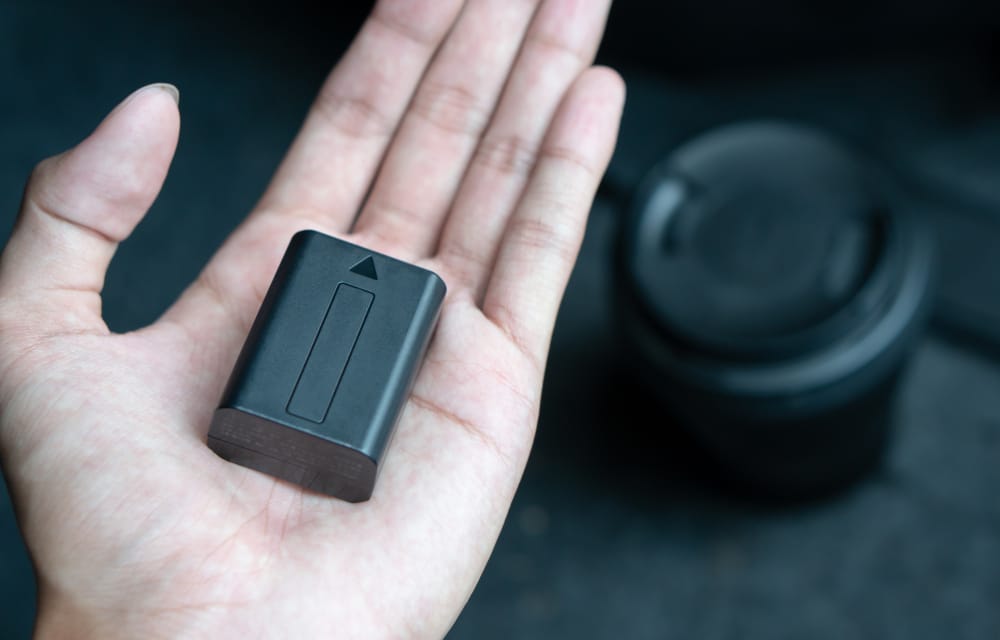
Some mirrorless models also support USB-C charging, allowing photographers to recharge their cameras on the go using portable power banks. Additionally, battery grips can be attached to extend battery life, making power management one of the essential camera parts for prolonged shooting sessions.
These key camera parts—camera body, sensor, lens mount, EVF, LCD touchscreen, IBIS, autofocus system, and battery management—are at the core of what makes modern mirrorless systems so advanced and versatile. Understanding how these components work together helps photographers choose the right mirrorless camera for their specific needs.
Section 3: Additional Camera Parts and Accessories
While the core components of a mirrorless camera system—such as the sensor, autofocus system, and image stabilization—form the backbone of a camera's functionality, there are several additional camera parts and accessories that can significantly enhance the overall photography experience. These parts may seem secondary, but they often play a crucial role in how photographers manage their workflow, improve efficiency, and expand their creative possibilities. In this section, we’ll dive into some of the most important additional camera parts and accessories that are integral to modern mirrorless systems.
Memory Card Slot(s)
One of the often-overlooked camera parts that has a major impact on performance is the memory card slot. Memory cards are used to store photos and videos, and the speed and capacity of these cards can directly influence the photographer's shooting experience. Many modern mirrorless cameras support high-speed memory cards like SDXC, UHS-II, or CFexpress, which enable faster read and write speeds. This becomes especially important when shooting in high-resolution RAW formats or recording 4K/8K video, where large files need to be written to the card quickly to avoid buffering issues.
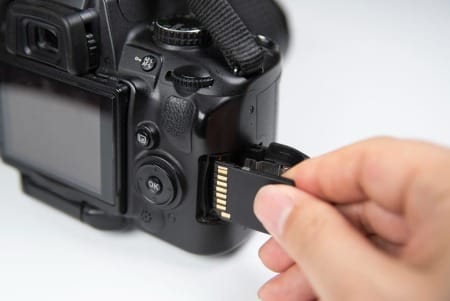
Some mirrorless models feature dual memory card slots, offering added flexibility. Dual slots allow photographers to set up redundancy (saving images to both cards simultaneously) or overflow (automatically switching to the second card when the first is full). This setup is especially useful for professional photographers who cannot risk losing critical data, such as wedding or event photographers.
Ports and Connectivity
The ports and connectivity options are essential camera parts that enable photographers to connect their cameras to various external devices. Mirrorless cameras often come equipped with a range of ports, such as USB-C, HDMI, microphone input, and headphone jacks. These ports expand the functionality of the camera, particularly for videographers and content creators.
· USB-C: Used for charging, data transfer, and sometimes tethered shooting, USB-C is a versatile port that has become a standard in many modern mirrorless cameras. Photographers can transfer images quickly or shoot tethered, where the camera is directly connected to a computer for real-time image review.
· HDMI: An HDMI port is vital for videographers who want to output clean video footage to external monitors or recorders. This is particularly useful when shooting high-quality video for professional purposes.
· Microphone and Headphone Jacks: For filmmakers, having a 3.5mm microphone input and headphone jack is essential. The microphone input allows for high-quality audio recording via external microphones, while the headphone jack enables real-time audio monitoring to ensure sound quality is optimal during recording.
These connectivity camera parts play a critical role in expanding the capabilities of the camera, particularly for those working in multimedia fields.
External Flash and Hot Shoe
Another key accessory that works in tandem with mirrorless systems is the external flash. While many mirrorless cameras have built-in flashes, these are often limited in power and versatility. External flashes, which mount onto the camera’s hot shoe, provide greater control over lighting in a scene. They are crucial for portrait, event, and fashion photographers who need powerful, directional lighting to create professional-quality images.
The hot shoe mount also accommodates other accessories such as external microphones, wireless triggers, and even LED lights. This mount is one of the most versatile camera parts, as it allows for easy attachment of various external tools that can improve lighting, audio, or even communication with other photography gear, like off-camera flash systems.
Camera Straps and Grips
Although often seen as less critical, camera straps and grips are important accessories that improve comfort and handling, especially during long shoots. Many photographers upgrade to padded or ergonomically designed camera straps that distribute the weight of the camera more evenly across the body, reducing strain on the neck or shoulders. Additionally, wrist straps and hand grips give photographers better control and security while shooting handheld.
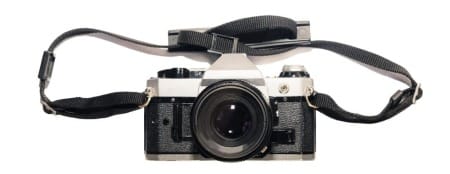
Battery grips are another useful accessory, particularly for photographers who need extended power and improved handling. These grips attach to the bottom of the camera body and often include additional batteries, allowing photographers to shoot for longer periods without changing power sources. Battery grips also provide an extra vertical shutter button and controls, which can be helpful for portrait photography.
Remote Shutter Release
A remote shutter release is a valuable tool for photographers who want to eliminate any risk of camera shake, especially when using slow shutter speeds or shooting long exposures. These devices allow photographers to trigger the shutter without physically touching the camera, which is particularly useful in landscape or astrophotography, where even the slightest movement can result in a blurry image.
There are two main types of remote shutter releases: wired and wireless. Wireless models often offer more functionality, such as interval shooting for time-lapses or delayed shutter release for group photos. These accessories, while small, are important camera parts for any photographer looking to increase precision in their shots.
Summary
While many photographers focus on the core components of their mirrorless cameras, understanding the value of additional camera parts and accessories can elevate the overall shooting experience. Memory card slots, ports, external flashes, camera straps, grips, and remote shutter releases are all essential elements that can enhance a photographer’s workflow, comfort, and creative capabilities. By integrating these accessories into their setups, photographers can make the most out of their mirrorless systems and adapt to various shooting conditions with ease.
Section 4: How These Camera Parts Enhance the Mirrorless Experience
The integration of various camera parts into a mirrorless system plays a significant role in defining the unique advantages these cameras offer over traditional DSLR models. From the portability and ease of use to cutting-edge technology that enhances image quality, the design and functionality of each part contribute to creating a seamless and efficient shooting experience. In this section, we’ll explore how the key camera parts of mirrorless systems work together to elevate both the creative process and technical performance for photographers.
Faster and More Efficient Performance
One of the most notable benefits of mirrorless cameras is the increased speed and efficiency in performance, largely due to the streamlined internal design. By removing the mirror mechanism, which is a mechanical component found in DSLRs, mirrorless systems experience fewer delays between shots. This results in faster burst rates, enabling photographers to capture high-speed sequences, which is especially valuable in sports, wildlife, and action photography.
The absence of the mirror also reduces vibration during shooting, improving image sharpness when using slower shutter speeds. Fewer moving camera parts mean there is less wear and tear on the system, potentially extending the lifespan of the camera and reducing the likelihood of mechanical failure over time. This design efficiency allows mirrorless cameras to deliver top-tier performance, even in demanding shooting conditions.
Enhanced Real-Time Feedback
The electronic viewfinder (EVF) and LCD touchscreen are two critical camera parts that dramatically enhance real-time feedback in mirrorless cameras. The EVF provides an immediate preview of how the final image will look, including the effects of changes in exposure, white balance, and focus. This real-time view gives photographers more control over their compositions and settings, allowing them to make adjustments before capturing the shot. Additionally, many EVFs include focus peaking, which highlights areas of sharp focus, making manual focusing more precise and intuitive.
The LCD touchscreen further improves the user experience by enabling photographers to easily interact with settings, menus, and focus points. The ability to simply tap on the screen to select a focus point or trigger the shutter enhances efficiency, especially when composing shots at difficult angles. Together, these camera parts work to provide a highly interactive and responsive shooting experience, streamlining the photographer’s workflow.
Portability and Convenience
The camera body of a mirrorless system is typically smaller and lighter than that of a DSLR, which offers significant advantages for photographers on the move. The reduced size and weight make mirrorless cameras more portable, whether you’re traveling, hiking, or working in dynamic environments where carrying heavy equipment can be a burden. Despite their compact design, mirrorless cameras pack in all the essential camera parts needed for professional-grade performance, without sacrificing image quality or versatility.
This convenience extends beyond the size of the camera body. Mirrorless systems often feature more advanced battery management and connectivity options, such as USB-C charging, which allows photographers to charge their cameras on the go without the need for bulky chargers or external battery packs. This portability and ease of use make mirrorless cameras ideal for professionals who need flexibility and amateurs who want to enjoy photography without being weighed down by heavy gear.
Improved Image Quality with Fewer Moving Parts
Mirrorless cameras excel in delivering high-quality images, thanks in part to their simplified internal design and advanced image sensors. The direct connection between the lens and the sensor, without the interference of a mirror, ensures that light reaches the sensor more efficiently, improving overall image sharpness and reducing issues like backfocus, which can occur in DSLRs.
Additionally, many mirrorless systems come equipped with in-body image stabilization (IBIS), which compensates for camera shake, allowing photographers to capture sharp images even when shooting handheld in low light. IBIS is one of the most advanced camera parts in modern mirrorless systems, and it gives photographers the freedom to use slower shutter speeds without the risk of blurry images. This feature, combined with high-performance sensors, enables mirrorless cameras to consistently produce crisp, clear, and vibrant images across a range of shooting conditions.
Versatility and Expandability
Modern mirrorless systems are designed to be highly adaptable, with many options for expanding their functionality through interchangeable lenses, external flashes, and other accessories. The lens mount in a mirrorless system is engineered to support a wide variety of lenses, from compact primes to professional telephoto zooms, making these cameras suitable for virtually any genre of photography.
With the aid of adapters, photographers can also use legacy DSLR lenses on mirrorless bodies, ensuring that previous investments in gear are not wasted. This versatility is made possible by the engineering of camera parts like the lens mount and electronic connections, which are optimized for cross-compatibility. As a result, mirrorless cameras offer a flexible platform for photographers to build a system tailored to their specific needs, whether they specialize in portraiture, landscape, or videography.
Summary
The advanced integration of camera parts in modern mirrorless systems has redefined what photographers can achieve, offering faster performance, better real-time feedback, and superior image quality—all within a portable, convenient package. By minimizing mechanical components and maximizing efficiency through digital innovations like the EVF, IBIS, and advanced sensors, mirrorless cameras deliver a comprehensive photographic experience. Whether you’re a professional looking to push creative boundaries or an enthusiast seeking a compact yet powerful tool, these camera parts work together to enhance every aspect of the shooting process.
Conclusion
The evolution of mirrorless camera systems has revolutionized photography, offering a more efficient, compact, and versatile option for photographers across all skill levels. By eliminating the traditional mirror mechanism found in DSLRs, mirrorless cameras have streamlined the shooting experience, enhancing speed and image quality through fewer mechanical components and advanced digital features. The thoughtful integration of essential camera parts—such as the electronic viewfinder (EVF), in-body image stabilization (IBIS), and high-performance sensors—has made mirrorless systems not only easier to use but also more capable in a variety of shooting conditions.
Moreover, the portability and adaptability of mirrorless cameras make them suitable for both casual enthusiasts and professionals. Their smaller, lighter design ensures that photographers can carry their gear more easily, while still benefiting from cutting-edge technology. With support for a wide range of lenses and accessories, mirrorless cameras are highly versatile, offering expandability for those looking to build a customized setup.
Ultimately, the way these camera parts work together within mirrorless systems allows photographers to push creative boundaries and capture high-quality images more efficiently. Whether you’re shooting stills or video, mirrorless cameras offer the tools needed to achieve outstanding results in today’s dynamic photographic landscape.


